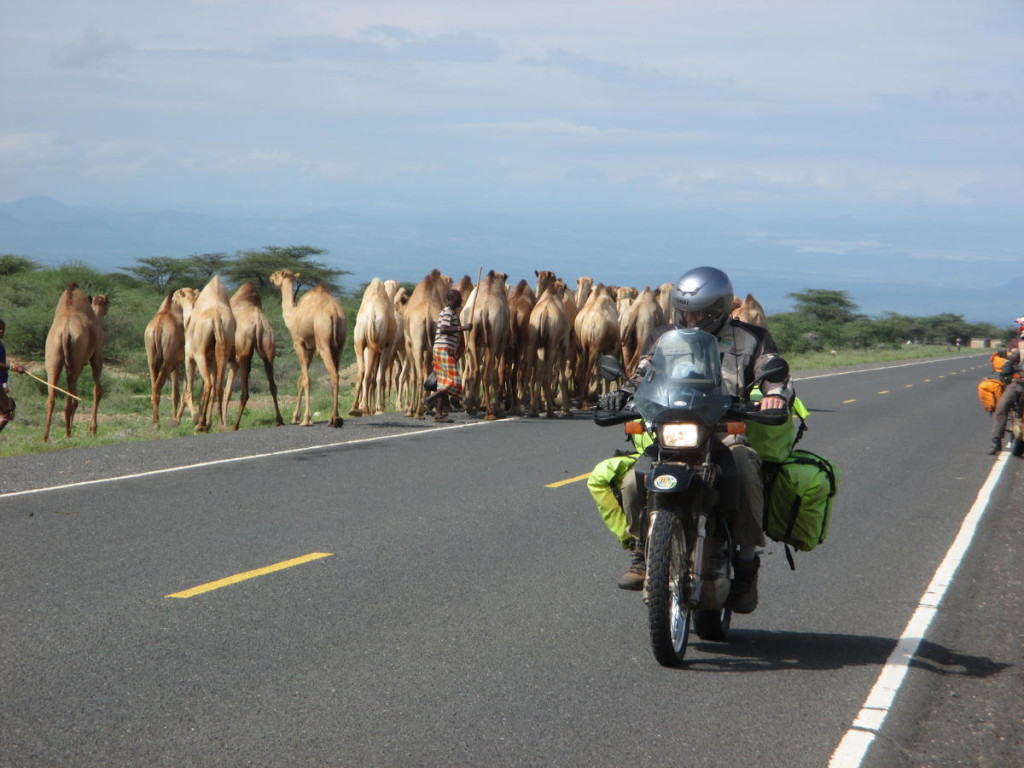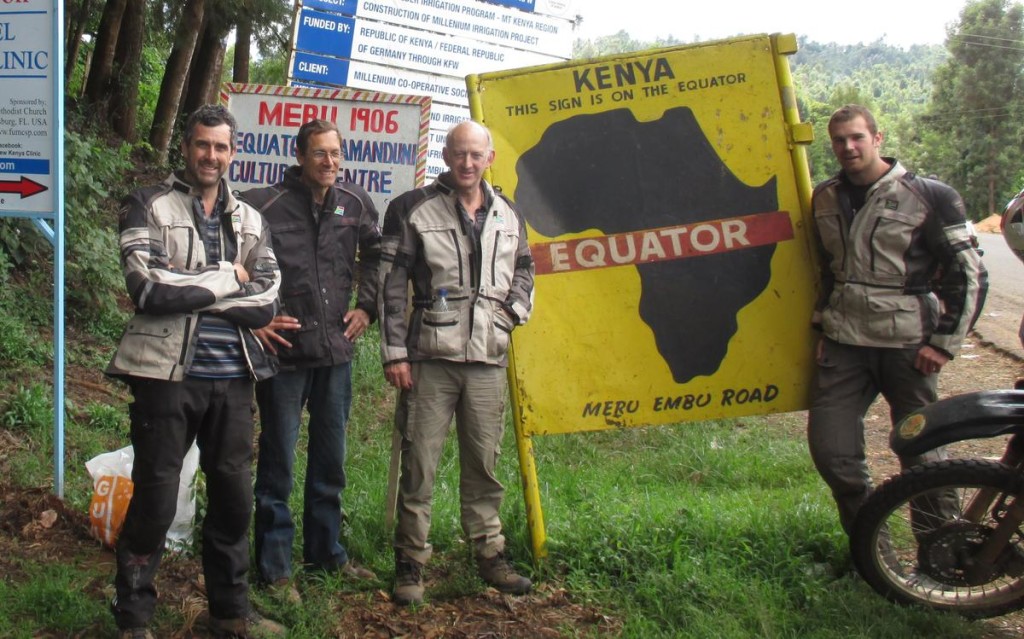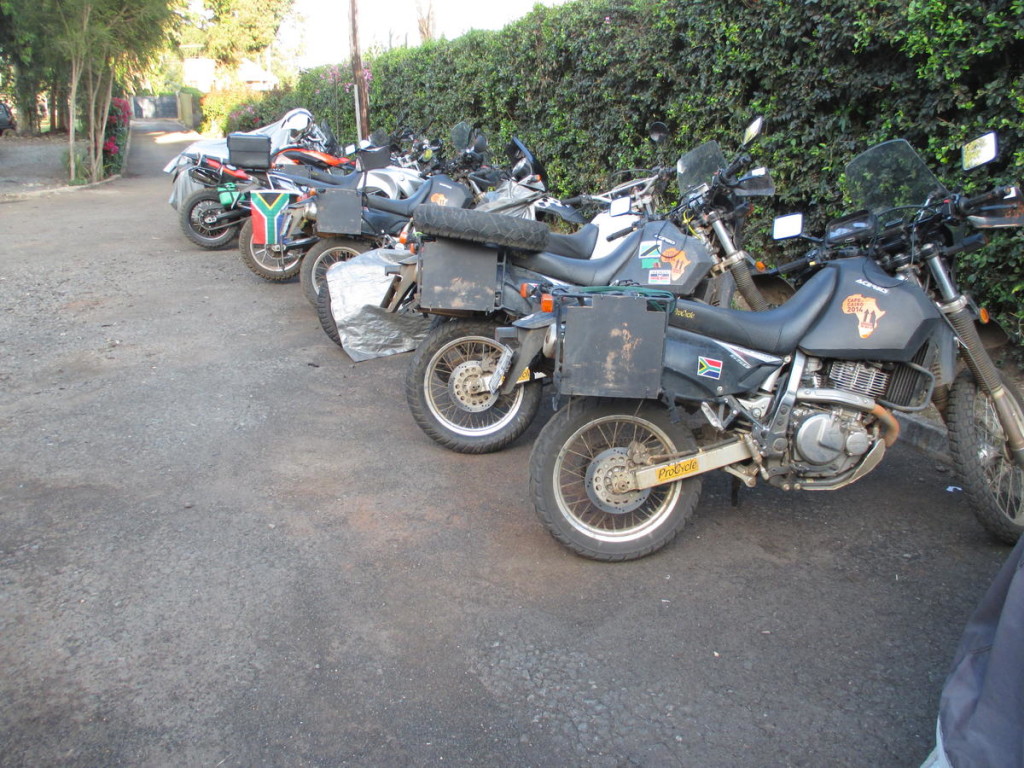244 km, 6948 km from Cape Town
JOU MA SE MARSABIT
The second half of this great road, started in an extraordinary dry mist which dissapeared after we descended from the plateau of Marsabit and we spent the day on this rough and rocky road with long muddy sections which sap speed and we only got to Moyale late in the afternoon. It was a great ride though and mud spalattered we all are.
We crossed over the Kenyan border and when we got to the Ethiopian side were told that the immigration guys had gone home for the day and we should sleep in Moyale and return in the morning.
We met a money changer and he guided us to the best place in town – a town that is a sea of traders, goats, donkeys, mud and functional mayhem
– Tango
Another tough section of road lay ahead across the Dida Galgalu Desert. Sandy, rocky, muddy in parts, long and harsh. Yet beautiful, despite the barrenness. We saw all kinds of birds, small blue swallows with brown caps and solitary raptors gliding effortlessly in the desert winds. Lilac breasted rollers flipped and rolled after insect like missiles. Plovers, travelling at 70km/h performed aerobatics alongside the bikes. At watery spots we spotted sacred ibis, like porcelain with black markings and beautiful curved beaks silent, elegant and watchful. This was their centuries old African home. We were the privileged visitors. As Garth neared the end of one particular diversion, he saw a huge black ground hopping bird which didn’t fly off in panic. ‘Ground hornbill’ was the guess, which became the standing joke when Kyle smartly commented, ‘You guys think every unidentified bird is a ground hornbill’. Wild camels in a man made bare dusty hollow by the road looked like a posed photo opportunity. What were they doing there? Probably keeping out of the winds and rain which had recently fallen. A little respite. There were sparse villages at long intervals, eaking out a bare living by scratching in the sand and base rock. Goats and cattle were everywhere at every village. Free range and fence free. It had to happen sometime. In fact we had been warned by other bikers, beware of the goats and other animals straying on the road. Leaving one village a small goat balked, danced, tiptoed, trotted and dashed in front of Shane’s bike. There was barely time to react. Avoiding the goat put bike and rider on the slippery slope off the road into the sloping verge. Grass, bush, tree stump, rocks and Trevor shouting nervously


